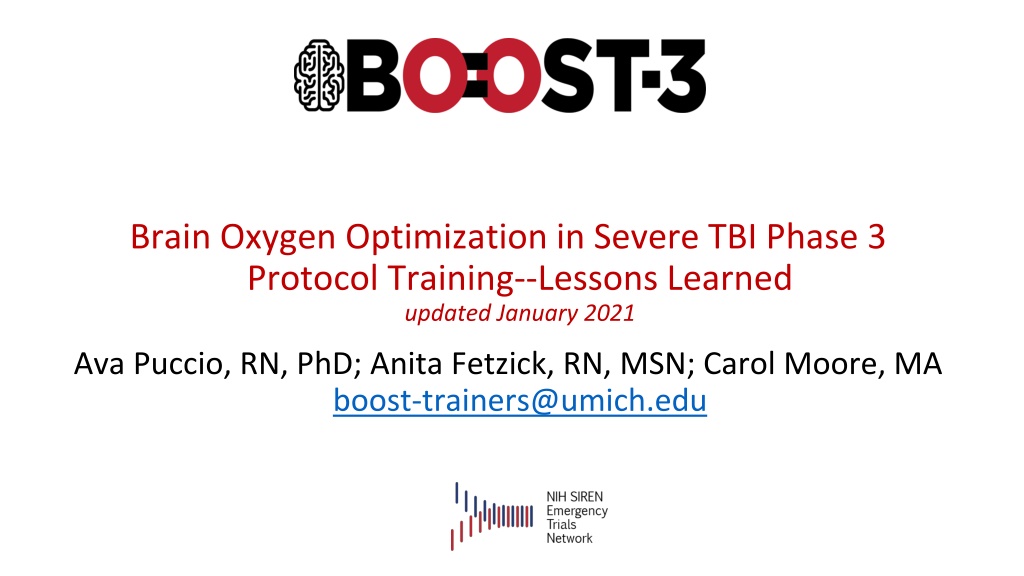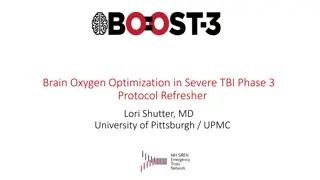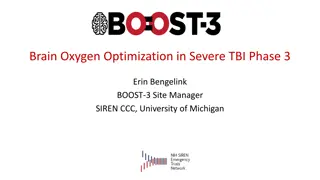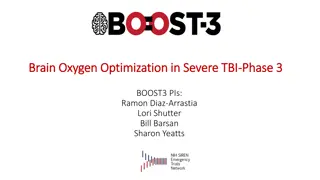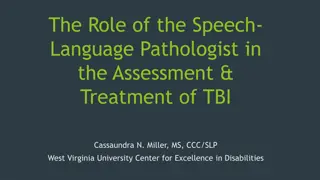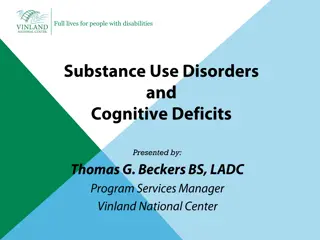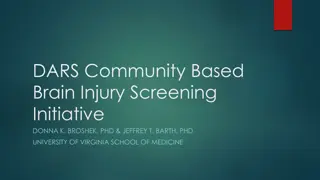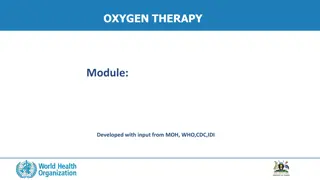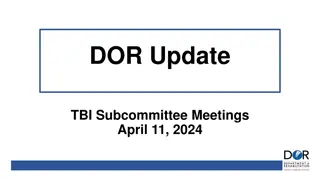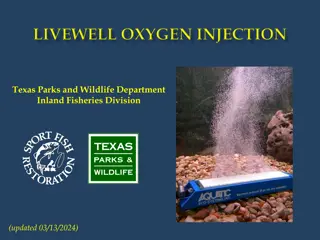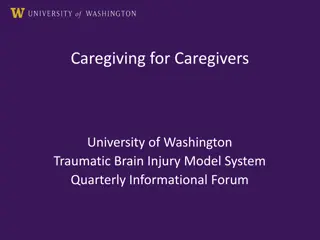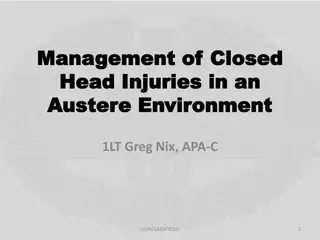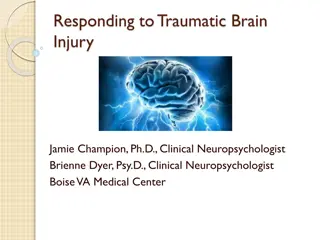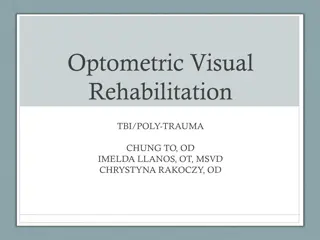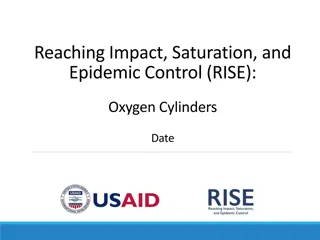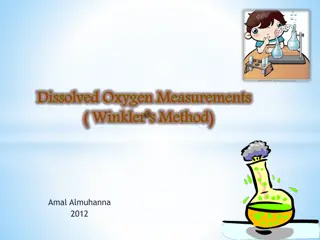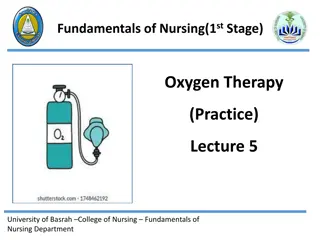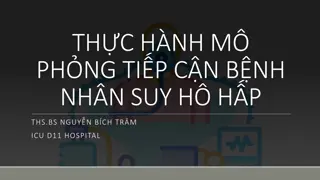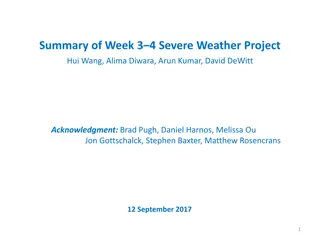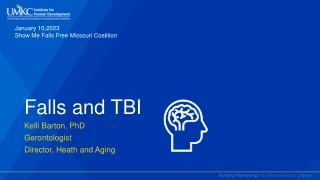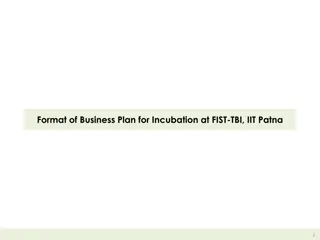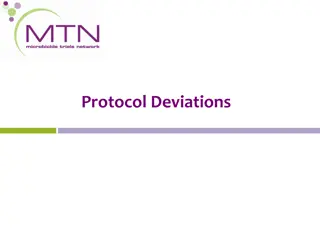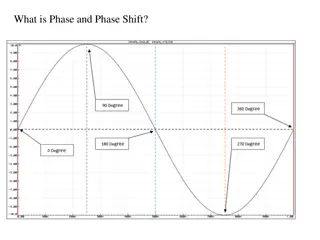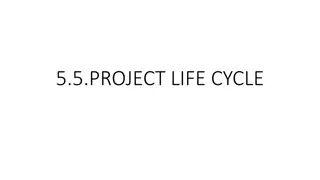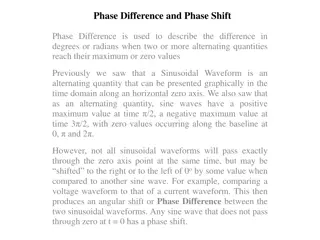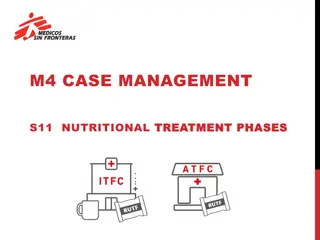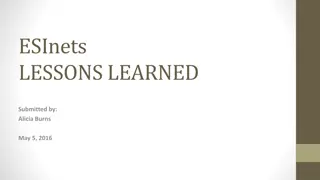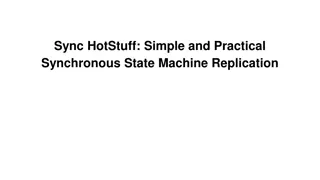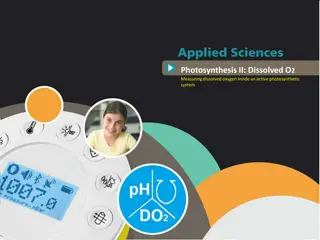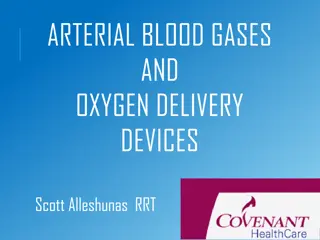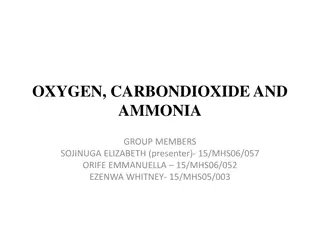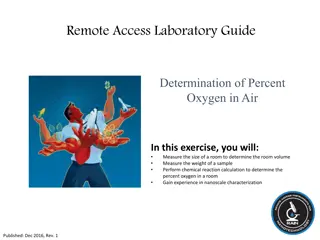Lessons Learned in Brain Oxygen Optimization for Severe TBI Phase 3 Protocol
Screening, enrollment, and inclusion/exclusion criteria insights for the Brain Oxygen Optimization in Severe Traumatic Brain Injury (TBI) Phase 3 Protocol are discussed. Key points include handling urgent patient queries, guidelines on hypotension and hypoxia, pupil assessment considerations, and surgical evacuation requirements within specific timeframes.
Download Presentation

Please find below an Image/Link to download the presentation.
The content on the website is provided AS IS for your information and personal use only. It may not be sold, licensed, or shared on other websites without obtaining consent from the author. Download presentation by click this link. If you encounter any issues during the download, it is possible that the publisher has removed the file from their server.
E N D
Presentation Transcript
Brain Oxygen Optimization in Severe TBI Phase 3 Protocol Training--Lessons Learned updated January 2021 Ava Puccio, RN, PhD; Anita Fetzick, RN, MSN; Carol Moore, MA boost-trainers@umich.edu
Screening and Enrollment: Lessons Learned For urgent questions related to a potentially eligible patient or a study participant, call the Emergency BOOST-3 PI Hotline at: 855-4-BOOST3 (855-426-6783)
Inclusion and Exclusion Criteria Questions Q: Is an ABG required during screening, to determine if a potential subject meets exclusion criteria: PaO2/FiO2 ratio < 150? A: No. If there is a clinical indication to obtain an ABG, such as major chest trauma, decreased SPO2 saturations, etc., an ABG is recommended.
Inclusion and Exclusion Criteria Questions Q: If a potential subject presents with hypotension (SBP < 90mmHg) or hypoxia (SPO2 <90), should they immediately be excluded? A: Not necessarily. The hypoxia and hypotension needs to be persisted for 5 mins sustained to be excluded. If patient is resuscitated and vital signs stabilize prior to the 6 hour from admission/12h from injury window closes, it may be possible to proceed with enrollment; if there is uncertainty regarding patient eligibility, contact the PI Emergency Hotline to confirm.
Inclusion and Exclusion Criteria Questions Q: Can a potential subject be enrolled if pupil assessment is not able to be evaluated? A: Bilateral unreactive pupils and GCS 3T, is indicative of brain death. However, if both pupils are unable to be assessed, potential for enrollment, weighing in GCS score. Should be reviewed with a lead PI prior to enrollment. If there is uncertainty regarding patient eligibility, contact the PI Emergency Hotline to confirm. should be reviewed with a lead PI prior to enrollment.
Inclusion and Exclusion Criteria Questions Q: For patients who require immediate surgical evacuation of a hematoma or other emergent surgeries? Do monitors still have to be inserted within 6 hours? A: Yes. Only if feasible to place monitors and randomize within 6 hours of arrival to enrolling hospital (and within 12 hours from injury). Monitors can be placed in the OR and randomization should take place during this time, provided it s within 6 hours of arrival. If the patient is to be randomized after placement of probes, do not hook up the cable to the PbtO2monitor until after randomization. Treatment can start when it is practical and feasible to do so.
Screening Log A screening log should be maintained by each site. Patients with all of the following should be included: Admission to ICU Positive TBI (verified by CT) Placement of intracranial monitoring (GCS < 8)
EFIC Process: Begins Upon Arrival of Potentially Eligible Subject If an LAR is not available prior to the placement of intracranial monitors, eligible subjects will be enrolled with EFIC after intracranial monitors are placed. LAR will be notified of an EFIC enrollment and consent to continue in the study will be sought at the earliest opportunity. Determine availability of LAR When a subject is enrolled under EFIC, efforts to contact an LAR will continue. *Document efforts on the informed consent log case report form* Note: Timing of probe placement MUST be prior to randomization for EFIC enrolled subjects
Considerations Related to Neuromonitoring Neuromonitoring devices that are NOT acceptable include: NIRS BIS (except in the OR) Jugular bulb saturation monitors Cerebral blood flow monitors Routine transcranial doppler Acceptable devices: EEG Microdialysis ECoG Brain temperature Cerebral autoregulation These devices can provide indirect information regarding brain tissue oxygenation. NOTE: The occasional use of TCDs to assess for vasospasm is allowed. If performed, this information should be collected
CST Physiologic Ranges The CST Reference Ranges document should be printed out and provided to clinical team upon subject enrollment. If values are outside of these ranges and the clinical team chooses not to treat, then the treating physician must document rationale for leaving value outside of range.
Procedures To Check Reliability of PbtO2 Measurements Calibration of device will be checked according to manufacturer s instructions Prior to Insertion Each participant will have an FiO2 challenge within 2 hours after catheter placement Recorded measurements will be initiated 60 minutes after placement of monitor Treatment staff will be blinded to results in control arm FIO2 Challenge FiO2 Challenge will be repeated daily until probe is removed. Study staff may request a challenge at any time if they suspect the PbtO2 probe is not working. Repeated Challenges
Handling of Study Interventions: Blinding PbtO2 Monitors will be masked for subjects randomized into the Control Group Video: Licox Blinding Cover Application 6 Month Outcomes Assessors must be blinded to randomization assignment BOOST-3 Quick Guide Reference for Raumedic Device
Duration of Monitoring: Minimum 120 hours (5 days) from time of randomization Day 1 begins at time of randomization and ends at 23:59 that same calendar day. Days 2--6 begin at midnight and end at 23:59 each calendar day.
Removal or Replacement of Probes In general, ICP and PbtO2 probes will be removed by Day 5 (minimum 120 hours of monitoring may carry over to a Day 6 visit) Continued monitoring is allowed if clinically indicated. Treatment arms MUST be maintained Replacement of a PbtO2 probe will only be considered in the ICP + PbtO2 group. Probes may be removed before 5 days (120 hours) in the following situations: The participant awakens from coma (motor GCS score = 6). There is a medical indication for removal (ie, infection; associated bleeding). No abnormalities of ICP for 72 hours after injury in the ICP only arm No abnormalities of ICP or PbtO2 are noted for 72 hours after injury in the ICP + PbtO2 arm Withdrawal of care ***NOTE: if a participant undergoes withdrawal of life sustaining treatments during the A. B. C. D. E. first 5 days/120 hours of monitoring, the site PI must call the study hotline to notify study leadership about withdrawal of life sustaining treatments for the participant. If a probe is removed, the reason will be documented in the CRF An intent to treat analysis will be used.
Documentation of Interventions Treatment interventions triggered by elevations in ICP and/or decreases in PbtO2 will be recorded by the ICU nurses in bedside flow sheets, the EMR, and/or in CarePath The time the abnormality was noted by nursing staff and the time the intervention started should also be recorded in the medical record, with the goal of an intervention initiation within 15 minutes of onset of the event. Study coordinators will transfer information about those interventions into WebDCUTM. Data to be collected includes information regarding the efficacy of the intervention in reversing the abnormal physiologic parameter. Pertinent information from the ICU flow chart, nurses notes, as well as the continuous record of ICP and PbtO2, will be collected daily by the study coordinators.
Tier Treatments: Lessons Learned Q: What if a treatment that is listed in the Tiers is already being done prior to the beginning of an abnormality that signals the beginning of a Scenario? Is there an exception in which you may begin in Tier 2 treatments? A:Only treatments initiated AFTER an abnormality has begun which begins an episode or Scenario should be entered on the case report form (CRF) as treatments included in the study protocol. The CRF will document the time of the new episode, and any new treatment initiated. If the treatment was already being actively used before the episode started, it should NOT be entered on the CRF as a new treatment. Examples: If the head of bed is already elevated when the ICP increases to begin a new episode, the raising head of bed is not a new treatment unless the head of the bed is raised further. If a patient has an emergent cranial surgery, then the procedure cannot be considered as a Tier (3) Treatment if any episodes occur AFTER surgery has occurred. If you are doing a treatment that says ensure temperature or maintain a temp , you must note WHICH treatment was INITIATED in order to ensure or maintain Exception: If the treatment team is already working in Tier 2 when a new Episode begins, and the clinicians deem it unreasonable or inadvisable to re-visit Tier 1 treatments (e.g., HOB is already elevated, CSF drainage utilized, and others), then it is acceptable NOT to begin treatment of the new Episode with Tier 1 choices.
Use of a Daily Checklist completed by the study coordinator at the bedside may contribute to fewer protocol deviations from delayed/missed tier interventions or missing data Data Capture is Essential to Study Success! The Moberg Device Setup and Procedures Manual should be at the bedside upon each enrollment to assist with setup/discontinuation of monitoring, troubleshooting
Reason for wishing to withdraw must be determined Study interventions and further data collection may be discontinued After withdrawal, the participant s care should revert to standard care at the enrolling site. Participant data collected prior to withdrawal from the study is maintained in the study database, but no additional participant data will be collected from the participant or medical record following study withdrawal. Exception could be obtained from LAR to continue to collect data must be documented in research record. Withdrawal From Participation
For additional references and resources, please review the FAQ and Toolbox pages on the BOOST-3 SIREN website. For non-urgent questions: boost-trainers@umich.edu For urgent questions related to a potentially eligible patient or a study participant, call the Emergency BOOST-3 PI Hotline at: 855-4-BOOST3 (855-426-6783)
